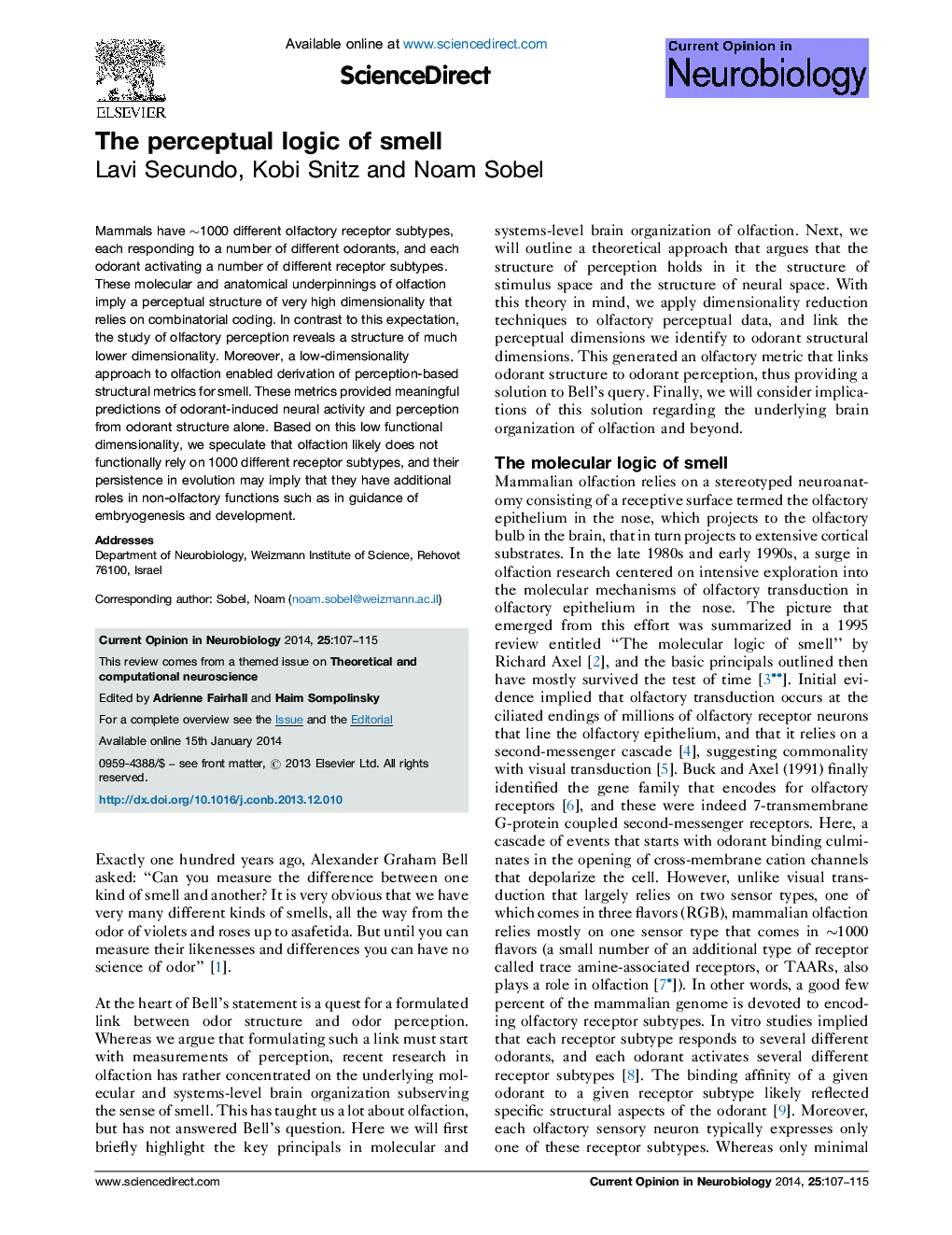| Article ID | Journal | Published Year | Pages | File Type |
|---|---|---|---|---|
| 6266549 | Current Opinion in Neurobiology | 2014 | 9 Pages |
â¢Molecular and anatomical data imply high dimensionality in olfactory perception.â¢Psychophysics uncover low dimensionality in olfactory perception.â¢Physicochemical odor metrics derived from perception predict olfactory neural activity.â¢Physicochemical odor metrics derived from perception predict perceptual odor similarity.â¢The low dimensionality of perception implies non-olfactory functions for olfactory receptors.
Mammals have â¼1000 different olfactory receptor subtypes, each responding to a number of different odorants, and each odorant activating a number of different receptor subtypes. These molecular and anatomical underpinnings of olfaction imply a perceptual structure of very high dimensionality that relies on combinatorial coding. In contrast to this expectation, the study of olfactory perception reveals a structure of much lower dimensionality. Moreover, a low-dimensionality approach to olfaction enabled derivation of perception-based structural metrics for smell. These metrics provided meaningful predictions of odorant-induced neural activity and perception from odorant structure alone. Based on this low functional dimensionality, we speculate that olfaction likely does not functionally rely on 1000 different receptor subtypes, and their persistence in evolution may imply that they have additional roles in non-olfactory functions such as in guidance of embryogenesis and development.
